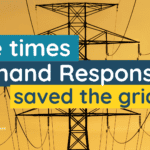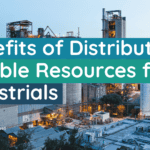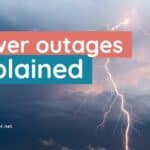
Participating in Demand Response allows industrial energy users to earn extra revenue while helping to stabilise and strengthen the electricity grid. But where does the money come from? Let us explain!
But first, what is grid balancing?
In the world of electricity, keeping a balance between what’s used and what’s produced is crucial, and failing to maintain this balance can lead to power outages.
At the national level, the Transmission System Operator (TSO) keeps the balance between electricity production and consumption. The global shift towards renewable, intermittent energy sources like wind and solar increasingly challenges the real-time balancing of electricity supply and demand. Unlike the steady output of fossil plants, renewables can’t be easily adjusted to match the ebb and flow of electricity demand; instead, their output is weather-dependent and often unpredictable.
At the same time, our world is electrifying. Cars, heating systems, and other devices now rely on electricity, creating a double challenge: meeting the rising demand and synchronising with the unpredictable nature of renewables.
Are we doomed? Not quite. Enter demand response.
Demand response is a change in electricity consumption by electricity consumers. Instead of burning more fuel to balance the electricity grid, we can now adjust our electricity usage to sync with the available supply.

Demand response programmes are particularly attractive for industries and businesses using a lot of electricity for their daily operations. The vast majority of electrical processes can be optimised, shifted in time or turned off/on, uncovering energy flexibility of those processes. Flexibility services providers like Sympower are experts in identifying and unlocking this flexibility.
Once the flexibility is found, they connect the business’s assets to a demand-response management platform. This allows them to closely monitor the assets and temporarily change their electricity consumption whenever the grid needs that extra push, while minimising the impact on the core production.
Earning Revenue with Demand Response
Participating in demand response programmes offers a lucrative opportunity for industrial energy users to monetise their energy flexibility while contributing to grid stability.
Compensation Structure
Transmission System Operator (TSO) compensates businesses for participating in demand response and being flexible with their electricity usage. The TSO first pays the flexibility services provider (Sympower) who then passes on the revenue to the participating business, minus a small share.
Maximising Revenue
The more megawatts (MW) businesses make available for demand response, the more revenue they earn. This creates a symbiotic relationship between flexibility service providers, businesses, and the grid operator. Flexibility service providers facilitate this process by maximising the value for their customers, ensuring businesses receive optimal compensation for their participation.
Two Payment Models
Demand response has two primary payment models: payment for availability and payment for activation. Payment for availability compensates businesses for making their energy assets available for grid balancing purposes, regardless of whether they are actually activated. Payment for activation, on the other hand, compensates businesses when their energy assets are actively called upon to respond to grid needs. The payment method varies per market programme. When participating in primary reserves, businesses are often compensated for their availability, while secondary and tertiary reserves reward market participants for both their availability and asset activation.
Win-Win Collaboration
This revenue model creates a win-win situation for all parties involved. Businesses earn extra revenue without disrupting their core operations, while grid operators benefit from increased grid stability and reduced reliance on expensive and polluting backup power solutions. Flexibility service providers act as facilitators, ensuring seamless coordination between businesses and grid operators, thus maximising the overall value generated.
Additional Benefits of Demand Response
Beyond revenue generation, participating in demand response programmes positions businesses as key players in the energy transition. By actively engaging in solutions that alleviate stress on the grid and reduce the need for highly polluting backup power solutions, businesses become part of the cleaner, more resilient energy future. Enhanced grid stability also results in lower and less volatile energy prices in the long term.
Ready to unlock new revenue with your existing machinery? Contact us, let’s uncover your energy flexibility together!









